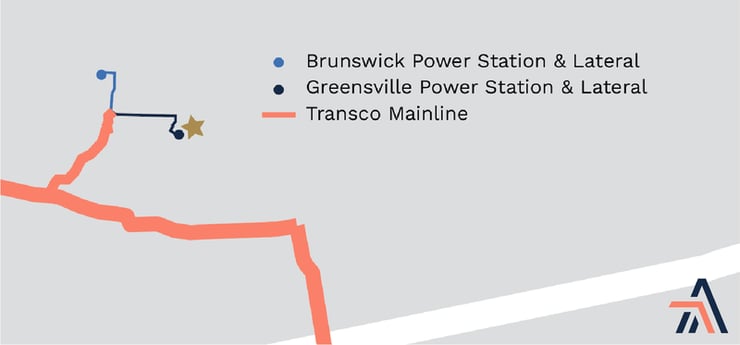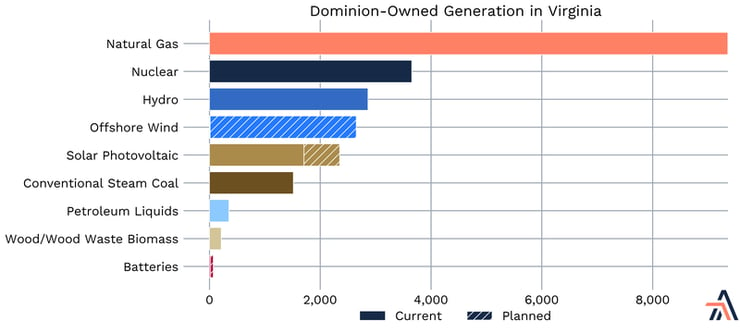Dominion Opens Doors for LNG Facilities Exempt from FERC Jurisdiction
Originally published for customers January 5, 2024
FERC granted a petition by Dominion Energy to exempt its project from the Commission’s jurisdiction. This precedent may open doors for incumbent infrastructure developers looking for growth projects with increased regulatory certainty.
What’s the issue?
Dominion Energy Virginia (Dominion) filed a petition for declaratory order asking the Federal Energy Regulatory Commission (FERC) to declare that its planned LNG production, storage, and regasification facility would be exempt from the Commission’s jurisdiction under section 7 of the Natural Gas Act (NGA). FERC recently granted the petition on the basis that the project satisfies the Hinshaw Exemption.
Why does it matter
As we’ve observed in the Haynesville and Permian basins, avoiding federal jurisdiction can provide increased regulatory certainty for infrastructure project developers.
What’s our view?
The Commission’s declaration that it lacks jurisdiction over Dominion’s LNG facility opens the door for similar growth projects across the country, which may be another viable alternative to interstate pipelines. Dominion’s willingness to take on this project also indicates the company believes natural gas is here to stay, at least for a while, since it appears at odds with a Virginia law that requires electricity generated from 100% renewable sources by 2045.
Dominion Energy Virginia (Dominion) filed a petition for declaratory order asking the Federal Energy Regulatory Commission (FERC) to declare that its planned LNG production, storage, and regasification facility would be exempt from the Commission’s jurisdiction under section 7 of the Natural Gas Act (NGA). FERC recently granted the petition on the basis that the project satisfies the Hinshaw Exemption. The Commission’s declaration that it lacks jurisdiction over Dominion’s project may open the door for similar projects across the country moving forward.
In an environment where avoiding federal jurisdiction has made project development easier, as we’ve seen with recent projects in the Permian and Haynesville basins, growth projects like Dominion’s proposed LNG storage facility may be another viable alternative to interstate pipelines.
Dominion’s willingness to take on this project also indicates the company believes natural gas is here to stay, at least for a while, since it appears at odds with a Virginia law that requires electricity generated from 100% renewable sources by 2045.
Dominion’s Back-Up Fuel Project
The proposed LNG facility, referred to as the Back-up Fuel Project, is intended to create a reliability asset for two large power plants in southern Virginia, both owned and operated by Dominion. The Brunswick County Power Station, a 1,358 MW generating facility, is served by Transco’s Brunswick Lateral, which was constructed as part of the Virginia Southside Expansion Project. Likewise, the Greensville County Power Station, a 1,588 megawatt MW gas-fired generating facility, is served by Transco’s Greensville Lateral, which was constructed as part of the Virginia Southside Expansion Project II. The LNG facility would be located adjacent to this station on land already owned by Dominion and would consist of liquefaction, storage, and regasification facilities to provide Dominion with 2 Bcf of onsite LNG storage capacity. The map below details the locations of each of these related facilities.

The Petition for Declaratory Order filed by Dominion in May states that the facility would serve as an alternate fuel source for these two plants “in the event of severe weather, cyberattacks, natural disasters or other interruptions that disrupt DEV’s primary natural gas supply.” It also notes that the Atlantic Coast Pipeline was intended to be the back-up supply source for the power plants before it was canceled, which we discussed in more detail in Canceled and Delayed Projects - Who are the Shipper/Pipeline Winners and Losers?
Dominion’s Arguments for Non-Jurisdiction
In order to ensure that the regasified fuel from the project will be used solely at Dominion’s two power plants, Transco will need to construct an isolation valve on the Brunswick Lateral. The isolation valve will be closed when needed, allowing the gas to flow through the Greensville and Brunswick Laterals and remain completely isolated from the rest of Transco’s system, which is key in Dominion’s argument that the project should not be under FERC’s jurisdiction.
Dominion asserted the reason the project should be considered non-jurisdictional is because it won’t be used for the interstate transportation of natural gas. Specifically, Dominion argued the project falls under the “Plant Line Exception” under the NGA. Per FERC, the NGA does not apply to plant line facilities that are:
- Located entirely in one state;
- Constructed to receive natural gas solely for use by a plant owned by the same entity; and
- Not to be used by the owner in the transportation or sale of natural gas to any third party.
If FERC were to determine the project is not a non-jurisdictional plant line (spoiler alert) and will be used in interstate commerce, Dominion provided a second reason that the project should be considered non-jurisdictional: the Hinshaw Exemption of the NGA. A project is considered a Hinshaw Pipeline and, therefore, non-jurisdictional if:
- All gas received by the project is within the boundary of a state and consumed within that state; and
- The rates, services and facilities associated with the project are regulated by a state commission.
The Back-up Fuel Project will be regulated by the Virginia State Corporation Commission (VSCC), satisfying both conditions to be considered a Hinshaw Pipeline.
FERC’s Decision on Jurisdiction
On November 16, FERC issued a Declaratory Order stating that the Back-up Fuel Project was exempt from FERC jurisdiction. The Commission disagreed with Dominion’s first reason for non-jurisdiction, as the project does not meet the criteria of non-jurisdictional plant line. In order to be considered non-jurisdictional, the facilities must not be integrated into the interstate pipeline system. Because the revaporized gas would be delivered via Transco, the project does not meet this requirement. FERC did agree with Dominion’s second argument, however, and determined that the project satisfied all the criteria to be exempt from jurisdiction on the basis of the Hinshaw exemption.
Virginia’s Clean Energy Goals
Dominion’s willingness to build an LNG facility in Virginia is interesting given the state’s current energy policy. In 2020, the Virginia Clean Economy Act (VCEA) was signed into law by former Governor Northam. Virginia has not been as hostile as other states towards natural gas in the past, but the VCEA’s goals are aggressive. The law requires Dominion to have all renewable generation by 2045, distinguished from many other states with a goal of net-zero emissions. Consequently, it calls for the retirement of all incumbent baseload generation.
Virginia’s current Governor Youngkin released a new energy plan in 2022, which calls for revisions to the VCEA and states its requirements are too aggressive — likely to create reliability issues in the future. There have been a few attempts in the Virginia House to repeal the law, but they have never successfully passed in the Democratic-controlled Senate. As of right now, the VCEA still stands as the official energy legislation in Virginia.

The chart above shows the breakdown of Dominion’s owned generation in Virginia. Dominion owns almost 20,000 MW in active generation capacity, half of which is powered by natural gas. The utility plans to add another 3,400 MW in renewable capacity by the beginning of 2027. It is important to note that almost 80% of the planned capacity comes from Dominion’s offshore wind project. With more than 20 years until all of Dominion’s fossil fuel-fired generation must be replaced, it appears the utility will use natural gas as a bridge fuel until then, and likely further into the future if Virginia’s goals change.